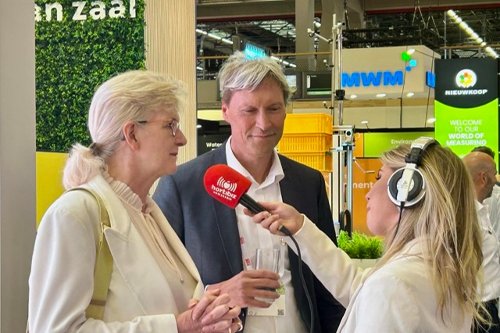Manage WFT resistance build up with Mainspring
Added on 06 September 2023

One of the most serious pests in protected ornamentals, WFT pierce plant tissue cells and suck out the contents causing necrosis and mottling. Impacting plants’ photosynthetic ability, this results in weaker plants whilst the wounding paves the way for secondary plant diseases, such as botrytis.
“Thanks to its translaminar effect, Mainspring targets WFT adults and larval stages in hard-to-reach places, such as flowers and buds,” explains Sam. “With a very quick mode of action, once ingested the pest stop feeding fast. This is key, as with a quick lifecycle WFT populations can literally explode.
“Based on the active ingredient cyantraniliprole, Mainspring has a unique mode of action and a different IRAC code to the other chemical options available,” he explains. “It is bad practice to rely on plant protection products with the same IRAC number, and therefore the same mode of action, as pests are more likely to develop resistance.”
The Sustainable Use Directive (SUD) is shaping the way UK nurseries operate - promoting a more sustainable approach to plant protection product usage. The SUD’s hierarchy of control begins with cultural controls, followed by biological, physical and lastly chemical.
“Cultural control options for WFT include disposing of crop debris and neglected stock, removing weeds, using clean equipment and avoiding taking cutting material from infested plants,” says Sam.
“Biological options include predatory mites, beneficial nematodes and biopesticides. ICL’s Steinernema feltiae Seeka beneficial nematodes help control the pupal stage of WFT in the growing media. Seeka is recommended for use preventively and when pest pressure is low. In addition, Lalguard M52 GR, our powerful new growing media incorporated biopesticide targeting vine weevil grubs, also contributes to IPM programmes for WFT, performing best at temperatures between 15-30°C.
“Physical control options, which immobilize the pest, are extremely limited for WFT. The last line of defense is chemical, which should only be used when previous IPM options have not delivered sufficient control, or where a WFT population has gone undetected and literally explodes overnight,” stresses Sam. “If chemical controls are misused, there is a real danger resistance will build up quickly in WFT populations. Targeting adults and larval stages, Mainspring with its distinctive mode of action and IRAC number, is a very welcome addition to IPM programmes for this potentially devastating and widespread pest of ornamental plants.”

Image by Freepik
More news















